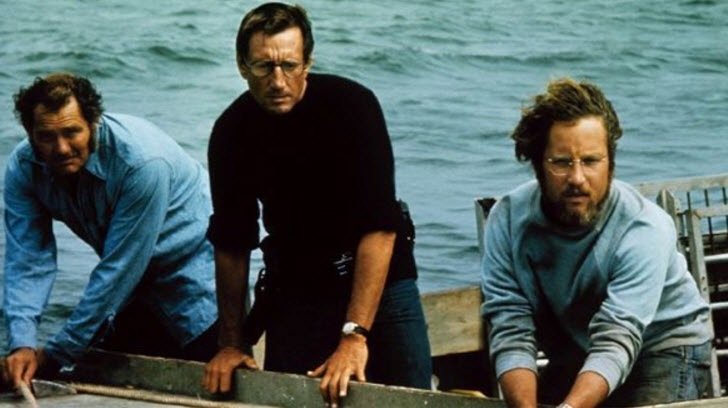The notions, both, of end-of-summer and bildungsroman were explored with impressive feeling and sensitivity in the Rob Reiner movie Stand by Me (1986). Based on Stephen King‘s 1982 novella The Body, the story takes place over the weekend of Labor Day in September of 1959. Four boys from the fictional town of Castle Rock, Oregon take a prolonged journey to find the body of a missing boy.

The story of Stand by Me, whose title is derived from the Ben E. King song Stand by Me, began in the modern day of 1986 with writer Gordie Lachance, portrayed by Richard Dreyfuss, learning of a stabbing in a restaurant. This led to Lachance thinking back to that Labor Day in 1959, when he journeyed with three friends enroute to see a dead body.

The trip to that body begins earlier with an introduction to Gordie’s family. Gordie’s parents grieve the death of Gordie’s older brother, Denny, as portrayed by John Cusack. The grieving isolates Gordie, as the loss of one brother leaves little if any room for his parents to address the emotional needs of Gordie, Denny’s surviving younger brother. Marshall Bell and Frances Lee McCain portrayed Mr. and Mrs. LaChance, the parents of Gordie and Denny, respectively.

The seeds of the adventure to follow are planted below the deck of Vern Tessio, the friend of Gordie LaChance, Teddy Duchamp and Chris Chambers. The really random acts of Vern leads to his suggesting to Gordie, Teddy and Chris that the four of them go looking for Ray Brower, a boy missing outside of town. Tessio, LaChance, Duchamp and Chambers were portrayed by Jerry O’Connell, Wil Wheaton, Corey Feldman and River Phoenix, respectively.

The adventure represents what the four boys expect the coming journey will offer to them. That each boy brings different yet emotionally similar baggage with them will become part of another similar tale that begins playing out alongside this main tale. A group of teenage boys with clearly deviant behaviors, led by John ‘Ace’ Merrill, holds sway over Billy Tessio, Charlie Hogan, Richard ‘Eyeball’ Chambers and Vince Desjardins. Bent on intimidation and peer pressure, Vern’s relationship with Billy and Chris’ relationship with Richard, their elder brothers, are not easy. Merrill, Billy Tessio, Hogan, Richard Chambers and Desjardins were portrayed by Kiefer Sutherland, Casey Siemaszko, Gary Riley, Bradley Gregg and Jason Oliver Lipsett, respectively.

‘Ace’ Merrill and ‘Eyeball’ Chambers threaten Chris and Gordie before their formal journey begins, with the internal baggage this reflects gaining its fullest significance only at later points in the movie. The individual relationships that the four youngest boys have with their fathers, in part defined through the relationships the older brothers also have with their fathers, becomes a focal point through the story. The expressions of these moments of pain, and the way that the boys respond, becomes worth your time and effort for engaging with the Stand by Me movie.

The screenplay for the movie Stand by Me was written by Raynold Gideon and Bruce A. Evans. The movie produced perhaps the first experience I had with seeing a movie prompting me to go back to the novella and read the material that inspired the movie. The parting drama, the histories of the boys shared at the end of the film, and the reflection upon what friendship was when twelve-years-old, becomes a parting gift. Popeye in his role as Chopper also was a gift. I rate Stand by Me as directed by Rob Reiner 4-stars on a scale of 1-to-5.
Matt – Saturday, August 27, 2022






















 (Glenne Headly as Iris Holland, left, and Richard Dreyfuss as Glenn Holland in Mr. Holland’s Opus).
(Glenne Headly as Iris Holland, left, and Richard Dreyfuss as Glenn Holland in Mr. Holland’s Opus). (Richard Dreyfuss as Glenn Holland, left, and Olympia Dukakis as Principal Helen Jacobs in Mr. Holland’s Opus).
(Richard Dreyfuss as Glenn Holland, left, and Olympia Dukakis as Principal Helen Jacobs in Mr. Holland’s Opus). (Jay Thomas as Bill Meister, left, and Richard Dreyfuss as Glenn Holland in Mr. Holland’s Opus).
(Jay Thomas as Bill Meister, left, and Richard Dreyfuss as Glenn Holland in Mr. Holland’s Opus). (Richard Dreyfuss as Glenn Holland, left, and Terrence Howard as Louis Russ in Mr. Holland’s Opus).
(Richard Dreyfuss as Glenn Holland, left, and Terrence Howard as Louis Russ in Mr. Holland’s Opus). (Richard Dreyfuss as Glenn Holland, left, and Joseph Anderson as Cole Holland in Mr. Holland’s Opus).
(Richard Dreyfuss as Glenn Holland, left, and Joseph Anderson as Cole Holland in Mr. Holland’s Opus). (Richard Dreyfuss as Glenn Holland, left, and Alicia Witt as Gertrude Lang in Mr. Holland’s Opus).
(Richard Dreyfuss as Glenn Holland, left, and Alicia Witt as Gertrude Lang in Mr. Holland’s Opus). (Jean Louisa Kelly as Rowena Morgan, left, and Richard Dreyfuss as Glenn Holland in Mr. Holland’s Opus).
(Jean Louisa Kelly as Rowena Morgan, left, and Richard Dreyfuss as Glenn Holland in Mr. Holland’s Opus).
 (Steven Spielberg, left, wrote and directed Close Encounters of the Third Kind as John Williams wrote and conducted the film’s music).
(Steven Spielberg, left, wrote and directed Close Encounters of the Third Kind as John Williams wrote and conducted the film’s music). (François Truffaut as Claude Lacombe, left, and Richard Dreyfuss as Roy Neary in Close Encounters of the Third Kind).
(François Truffaut as Claude Lacombe, left, and Richard Dreyfuss as Roy Neary in Close Encounters of the Third Kind). (Melinda Dillon as Jillian Guiler, left, and Cary Guffey as Barry Guiler in Close Encounters of the Third Kind).
(Melinda Dillon as Jillian Guiler, left, and Cary Guffey as Barry Guiler in Close Encounters of the Third Kind). (Teri Garr as Ronnie Neary, left, and Richard Dreyfuss as Roy Neary in Close Encounters of the Third Kind).
(Teri Garr as Ronnie Neary, left, and Richard Dreyfuss as Roy Neary in Close Encounters of the Third Kind).
